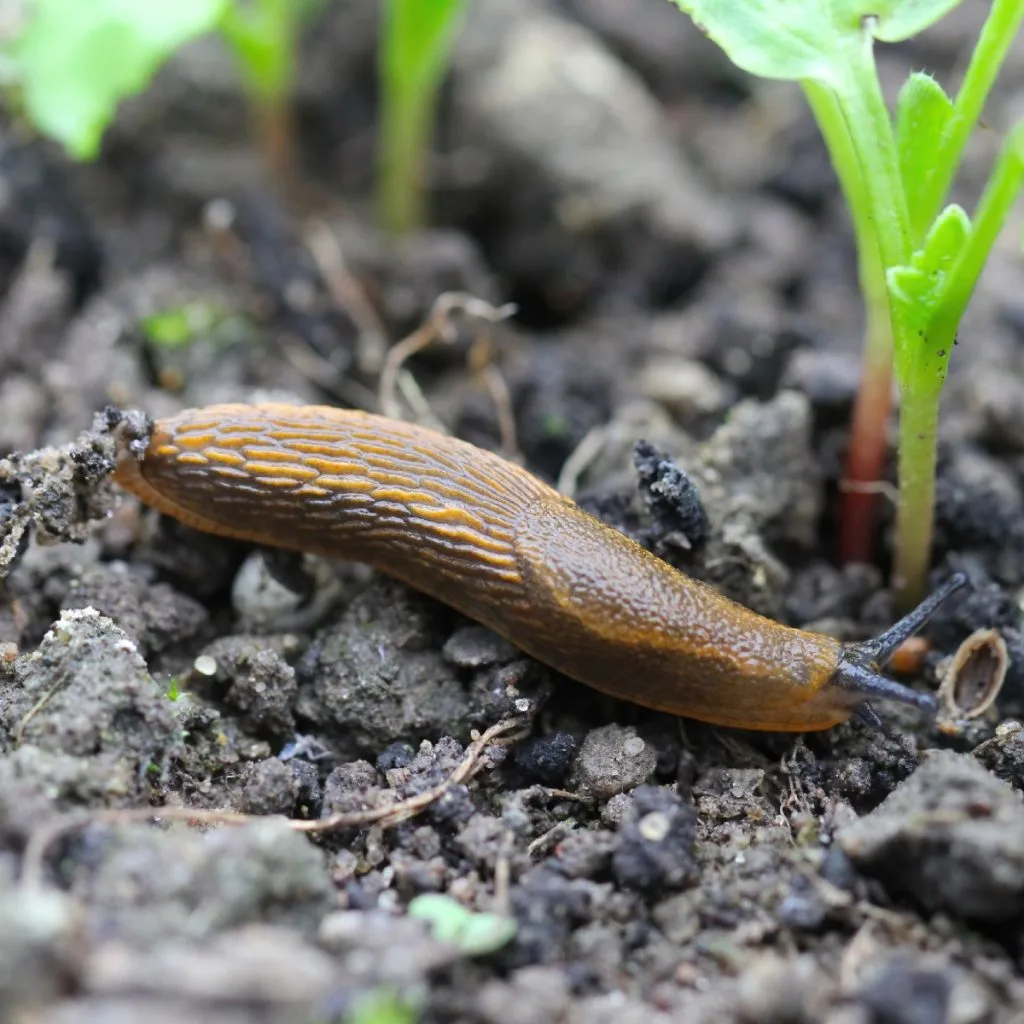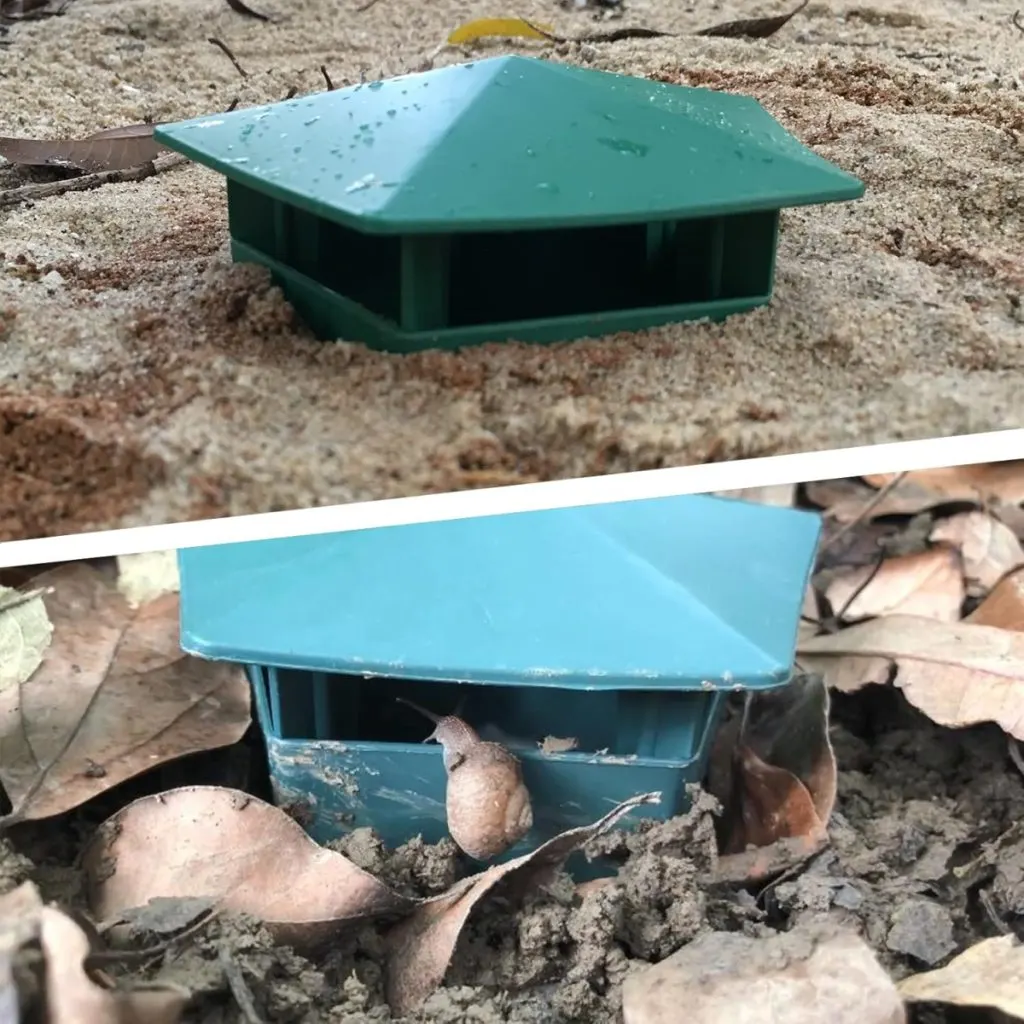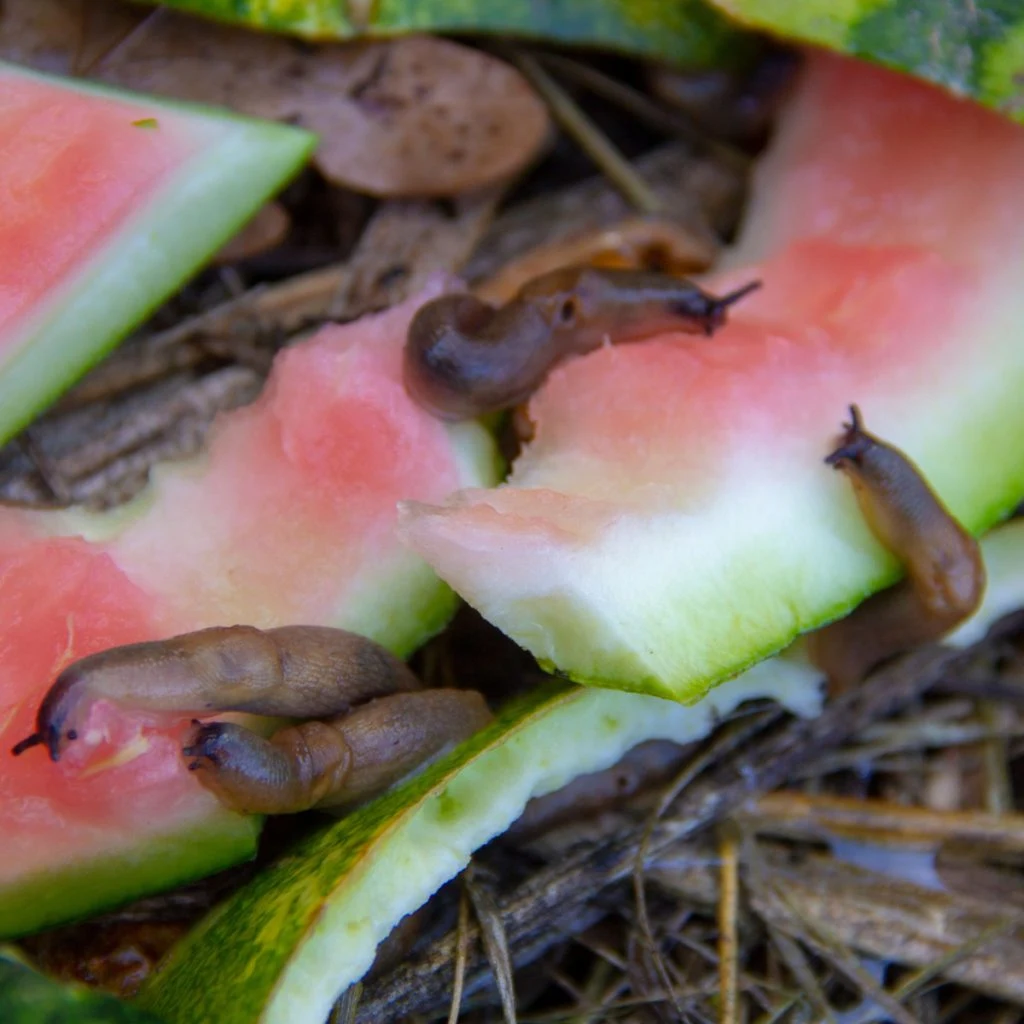Need a few simple tips and tricks that can stop slugs fast – and keep your vegetable and flower beds safe from their damage this year?
Slugs cause serious damage to vegetable plants, annuals and perennial flowers. In the blink of an eye, they can destroy hostas in your flowerbeds – or chew hole after hole in cucumber plants, tomato plants and more. In fact, there aren’t too many plants slugs won’t attack!
What makes slugs so difficult to defend against is that they can do all of their damage almost completely out of sight. Slugs are night-shift workers, coming out in the moist, cool temperatures of the overnight hours to feast and dine on almost anything with greenery. Unfortunately, by morning they are usually nowhere to be found.

As the sun begins to rise, slugs take cover on the underside of leaves or bury themselves in the soil below the very plants they love to eat. It is certainly one of the reasons they can be so difficult to combat. But there are ways to stop slugs in their tracks. And best of all, it doesn’t require commercial pesticides or chemical sprays to be 100% effective!
5 Easy Ways To Stop Slugs & The Damage They Cause
Liquid Traps
One of the easiest methods to attract and stop slugs is with beer, sugar or yeast traps. It’s common because it really does work well to keep them away from your plants – and eliminate them in the process!
It is not the actual taste of beer that slugs love. It’s instead the yeast and sugar in it that attracts them by the dozen. And if you don’t want to waste beer – you can make your own homemade solution with a gallon of water, a yeast packet, and a half cup of sugar!
Small, low-ridged containers filled with beer or a sugar/yeast solution attract the slugs with their scent. The slugs then climb in to fill up – but can’t get back out and die inside the solution.
Although you can use homemade shallow containers, there are some great options on the market that have covered lids and can be buried in the soil for a clean and very effective trap. Even better, the cover keep the liquid from washing out during rains. Affiliate Link: Snail Traps With Cover Lids

Using Crushed Egg Shells Around Plants
Crushed egg shells are another great all-natural method for stopping slugs from damaging your plants.
The soft, slimy exterior of the slug’s body are easily damaged by the rough, course make-up of crushed egg shells. In fact, as they try to inch over top of them, the jagged edges of the shells slice into their soft skins, killing them in the process.
To protect plants, simply crush up a few egg shells and scatter them around the main stem of the plant. Don’t over-crush the shells, simply break them down into small 1/4 to 1/2 inch pieces. This size will allow you to easily ring the plant with protection.
Not only will the egg shells keep the slugs from slithering up the stem, as they break down, they will also add calcium and other trace minerals and nutrients to your soil over time. It’s a great way to both power and protect your plants at the same time!
Using Protective Collars To Stop Slugs Fast
Slugs are not exactly the best of attackers when it comes to getting access to plants. In fact, their only path to a plant is to slowly slither up the main stem to the tasty foliage above. That is exactly why the ring of egg shells works so well – as will putting a simple plant collar around each of your stems.

It’s quite easy, if you cut off the access, you eliminate a slug’s path to destruction. And plant collars work like a charm for this. Even better, they are a snap to make and install.
To create plant collars, take toilet paper or paper towel rolls and cut them into two inch sections. Then, slit the roll and slide it like a collar around each plant. The height and smooth roll is more than enough to keep slugs from climbing up. Plant collars are especially effective for vegetable plants with thick stems like tomatoes and peppers.
How Melon Rinds Can Stop Slugs
Melon rinds are another great option for attracting and stopping slugs naturally. Slugs love the wet, sweet taste of watermelon, muskmelon and cantaloupe. They will quickly find the rinds of the melons when placed near your plants.
To use, take leftover rinds and place them flesh side down on top of the soil or mulch. The slugs will congregate in droves and stay on the rind since the flesh side is underneath and out of the sunlight. All you need to do is scrape them into a bucket of soapy water each morning!
You can actually re-use a rind for several nights to continue to trap the slugs in infested areas. It’s best when trying to trap to keep the rinds more on the edge of your plant rows and not right near the plants where the slugs can have access to both.
You may also notice a big influx of helpful birds such as chickadees visiting the rinds. The slugs are easy meals for them – especially against the bright backdrop of the flesh. See our article: How Chickadees Can Help Your Garden!

Hand Picking
And last but not least, there is hand picking to control slugs. Early morning hand picking is the fastest and one of the most effective natural methods for slug control. In fact, when hand picking is done on a regular basis, it can almost eliminate a slug population entirely.
Although slugs go to work at night, most continue to chew away into the first few hours of the morning daylight. As the sun begins to rise, it’s still cool and wet enough to allow them to work. Because of this, they are extremely easy to spot and hand pick at this point from the foliage of plants.
For hand picking, begin by placing a few drops of liquid dish soap in a bucket. Plain water will not kill slugs, but the soapy water will. The oils in the soap create a film over their slimy skin that prevents oxygen from getting through.
As you walk through your plants, be sure to turn leaves over to look underneath. It is here where most slugs will hide from predators and the impending hot sun. You will be amazed at after just a few days of hand picking, how much you can reduce the overall slug population.
Yes, you have to get up on the early side, but it’s worth it! One final note, do not dump the dead slugs out near your flowerbeds or garden. Believe it or not, the decaying slug scent will actually attract even more to the area.
Here is stopping slugs fast this year in your garden and flowerbeds – and to keeping your plants safe from harm!
This Is My Garden
Follow Our Facebook Page For Great Gardening Tips And Advice! This Is My Garden Facebook Page
This Is My Garden is a garden website created by gardeners, for gardeners. Jim and Mary Competti have been writing gardening, DIY and recipe articles and books and speaking for over 15 years from their 46 acre Ohio farm. They publish three articles every week, 52 weeks a year. Sign up today to follow via email, or follow along!
